I had promised myself a visit to the Château de Villandry over many years and when I did make it there, it certainly didn’t disappoint. A howling storm had raged all night, the water gushing down the drains of our pension and saturating the earth. Yet on arrival at Villandry at 9am, it was as if nothing had happened, not a blade of grass out of place, the gravel raked and all the plants standing like soldiers. The standard of maintenance is exemplary – a lesson I wish other high entrance gardens would follow.
The Château de Villandry is a Renaissance castle on the banks of the Loire, an area steeped in history and plentiful Châteaux. Here, in the 16th century, Jean le Breton, Minister of Finance to François I, laid out renowned Renaissance gardens. Renaissance gardens were characterised by the use of mathematics and linear perspective. In contrast to the earlier enclosed Medieval gardens, they embraced the wider landscape, seeking to unite the garden and house, often through a series of terraces and garden rooms. The rules, theories of proportion thus leading to harmony, were set out by the Italian Leon Battista Alberti. The Italian Renaissance garden was gradually adapted to the flatter landscape of northern Europe, developing into the formal Baroque style of the jardin a la française, when Louis XIV’s creation at Versailles, brilliantly designed by Le Nôtre, became the envy of Europe.
Over time, Villandry’s Renaissance gardens were altered as fashions changed – from Renaissance to French formal, then English Landscape and then confiscated during the French Revolution, until, happily, in the 20th century the Château was purchased by Spaniard Joachim Carvallo and his American wife Ann Coleman in 1906. When he arrived, Carvallo wrote “The grounds are landscaped in the English style, all undulations and hillocks …many recently imported exotic species – cedars, pines, thujas, magnolias… The Château itself is lost in a sea of trees and greenery.”
All that was about to change…
Carvallo felt that a restored Renaissance Château required a fitting Renaissance garden and, together with his wife, he set about restoring the great castle and gardens to their former glory. Adjoining the Château are three levels of gardens – the Ornamental Garden, the Kitchen Garden, the Water Garden.
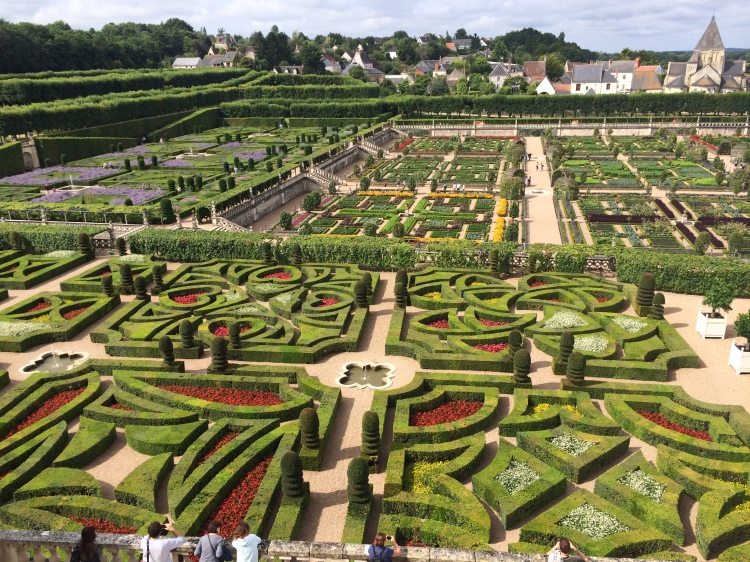
The Ornamental Garden in the foreground, with its four gardens of love, and the Kitchen Garden beyond; seen from the Belvedere.
The Ornamental Kitchen Garden or potager décoratif is spectacular – influenced by the geometric layout of medieval monastic gardens combined with the decorative elements of the Renaissance. Dr Carvallo applied his scientific brain to the complex geometry and a team of gardeners insure that the maintenance is just as meticulous.
In the Kitchen Garden there are nine compartments, each similarly sized but with a different geometric motif of vegetables and flowers in different colours. (see plan above).
These geometric beds are impressive to walk through,
but, as with parterres gardens, are best viewed from above – from the Belvedere or indeed from the roof of the Château.
The restoration of Villandry was a labour of love, motivated by the love affair and passion for restoration of its owners. So it is fitting that the Four Gardens of Love were carved out of topiary – tender love, passionate love, fickle love and tragic love – in the first salon of the Ornamental Garden adjoining the Château. Tender love is represented by flames of love and masks worn by lovers at balls; passionate love by entangled hearts, the whirlwind of romance; fickle love by horns and love letters; tragic love by the swords, representing duels.
In the second salon, striking patterns of yew and box topiary, evoke the symbolism of music, the large triangles represent lyres and the yew topiary candelabra.
Nearby is the lovely restored neoclassical fabrique, The Audience, an element of 18th century French gardens, where the Marquis would grant an audience to his farm labourers.
I loved the trompe l’œil window on a side wall of L’Audience.
Above the intense planting of the formal gardens lies the refreshing simplicity of the reflective Water Garden, with its feeling of calm and space.
This is a garden which rewards exploration – the complex geometry gives way to woodland walks, further informal vegetable beds, a herb garden, and roses and dahlias decorating the battlements with lovely views back to the Church and village.
As one moves further from the house, the planting becomes less formal. On the highest terrace is the recently created Sun Garden with a sun- shaped ornamental pond and bright yellow planting.
This is, without a doubt, one of the most spectacularly designed and maintained gardens I have ever visited. It was declared a Monument historique in 1934 and, like all the other Loire Chateaux, it is a World Heritage Site.
The visit to the interior is just as rewarding.
An incredible legacy which time, money, hard work and dedication by the Carvallos have left us.
How lucky we are to be able to share it.


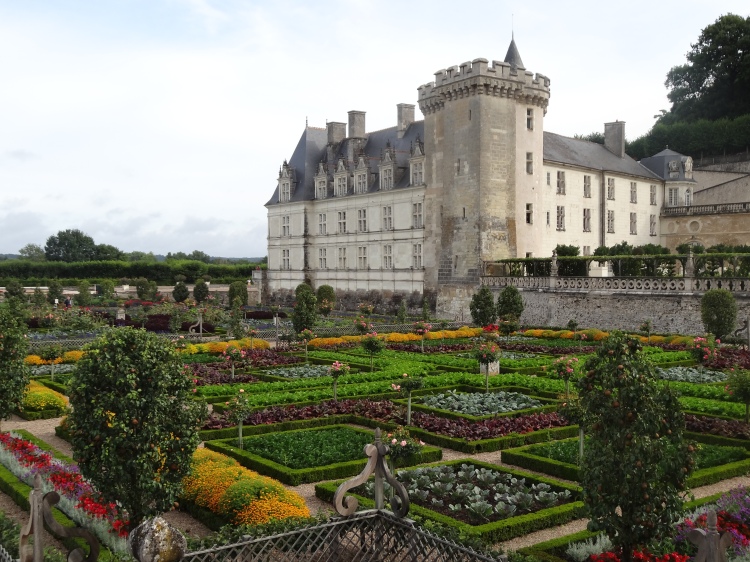
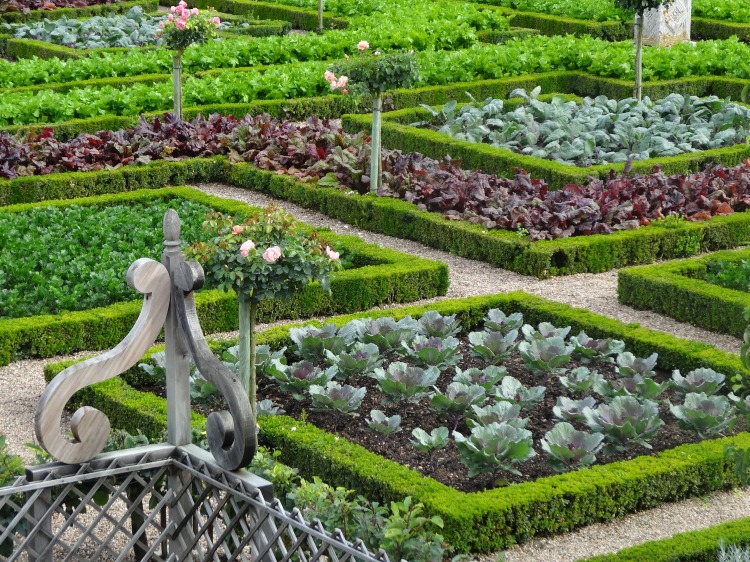
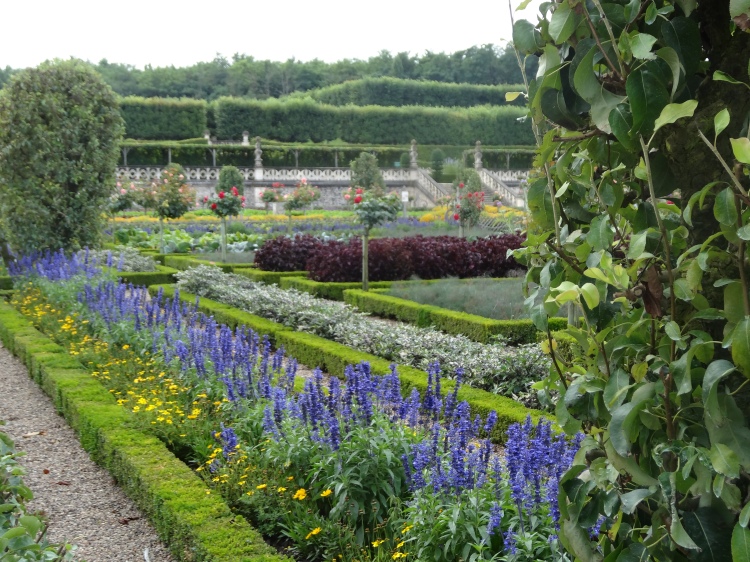
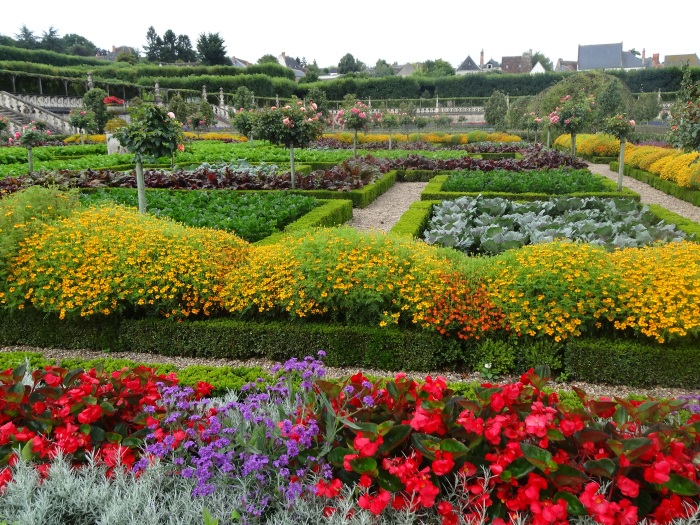
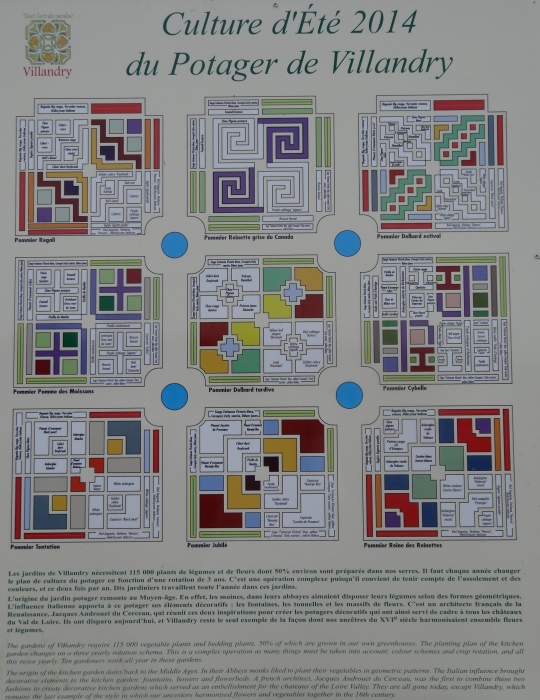
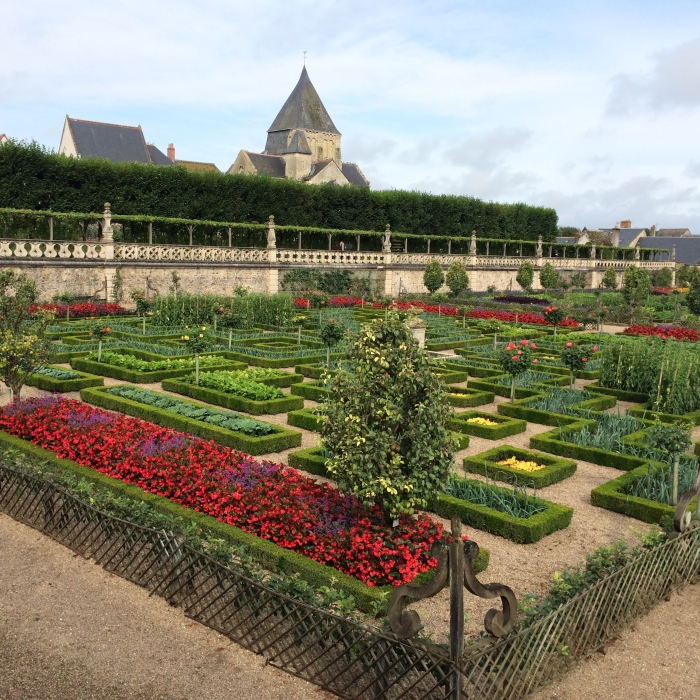
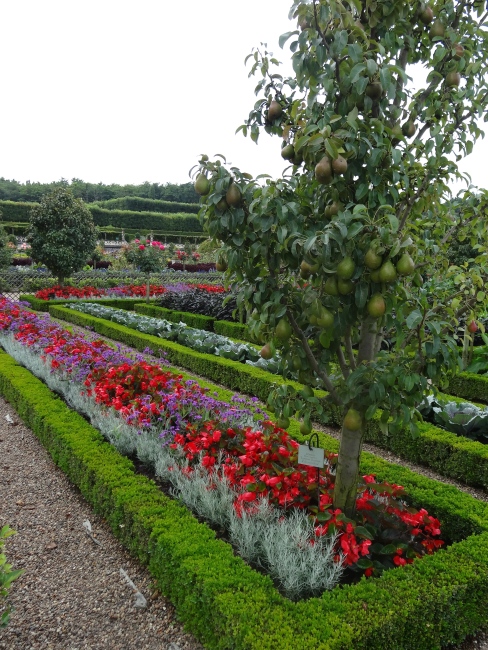
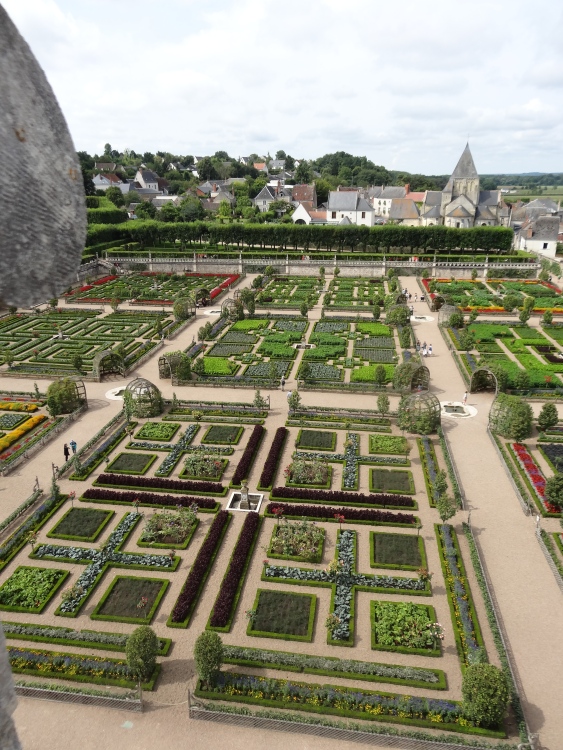
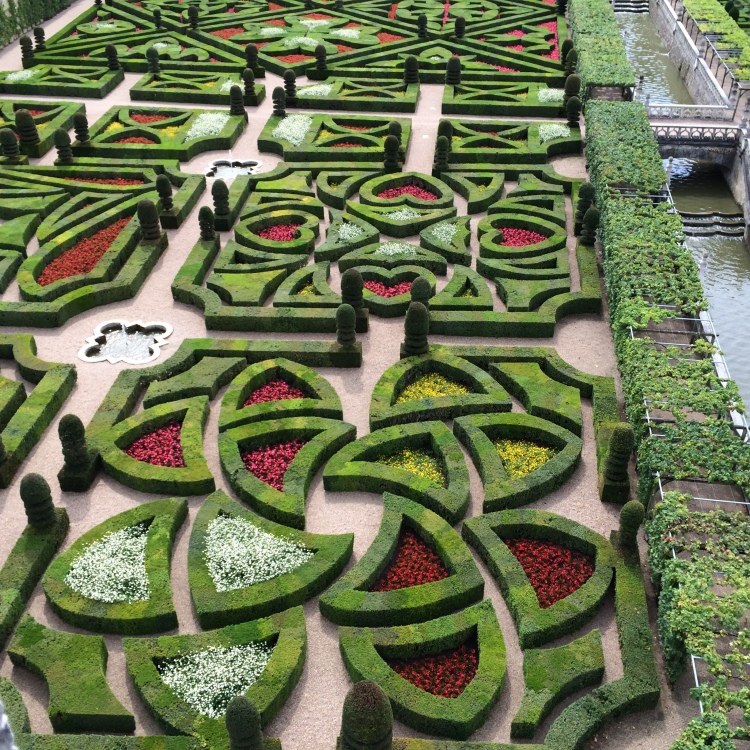
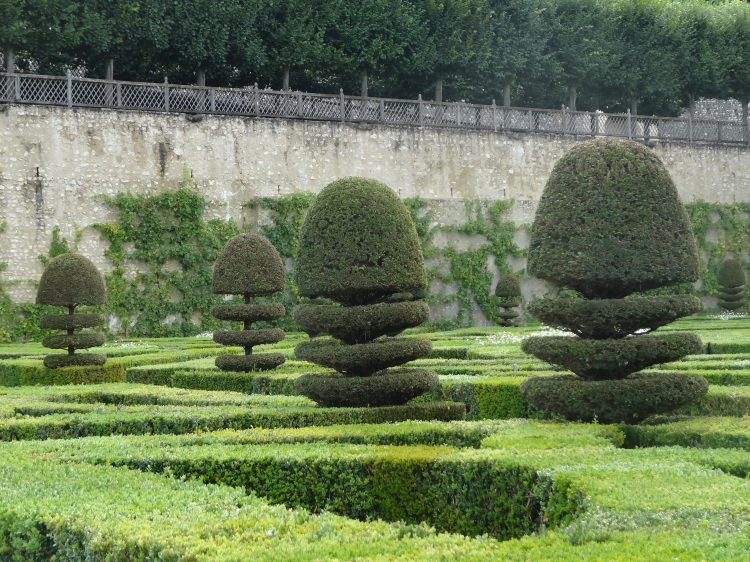
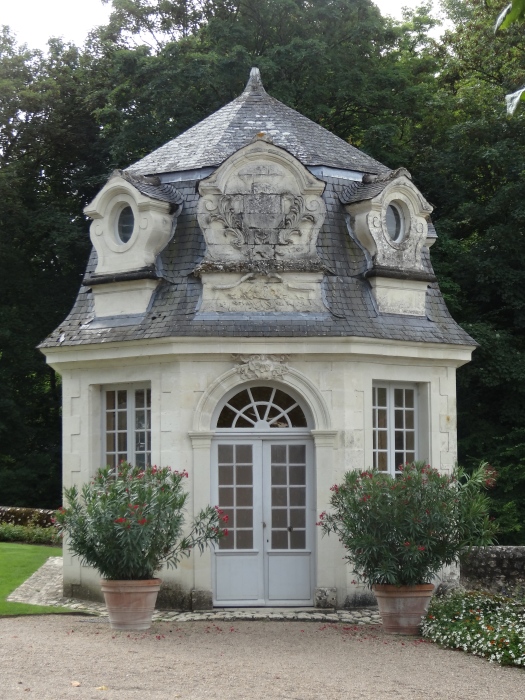
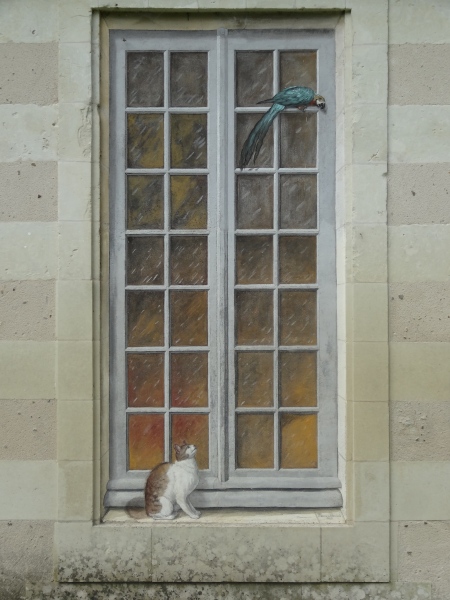
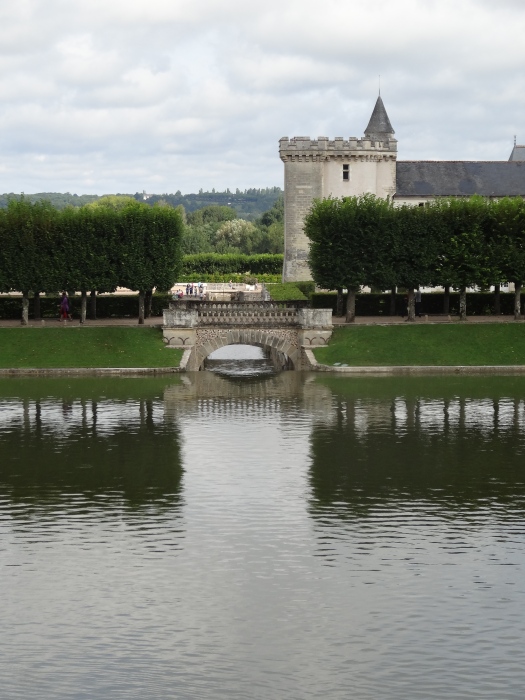
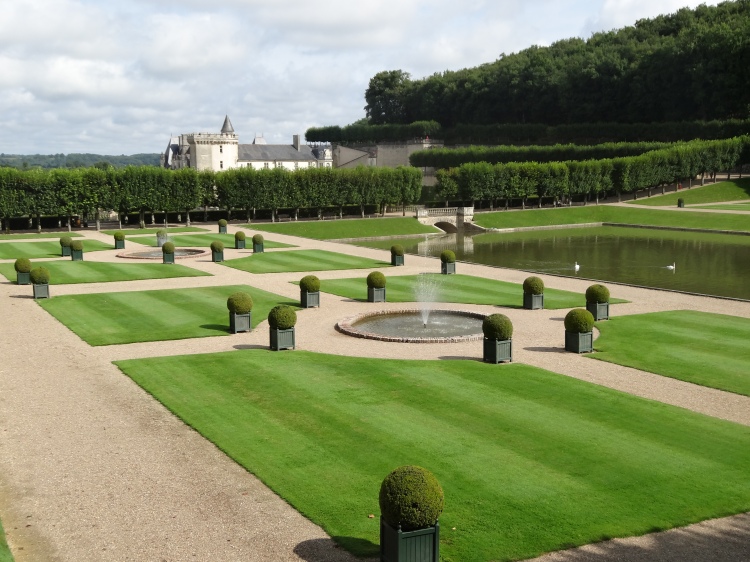
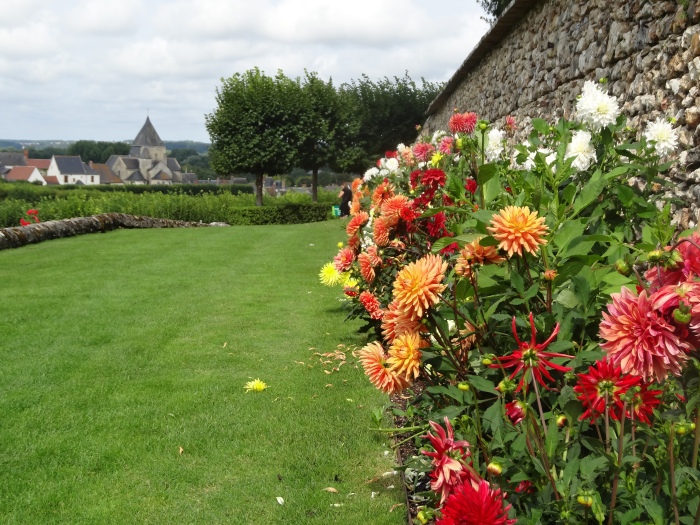
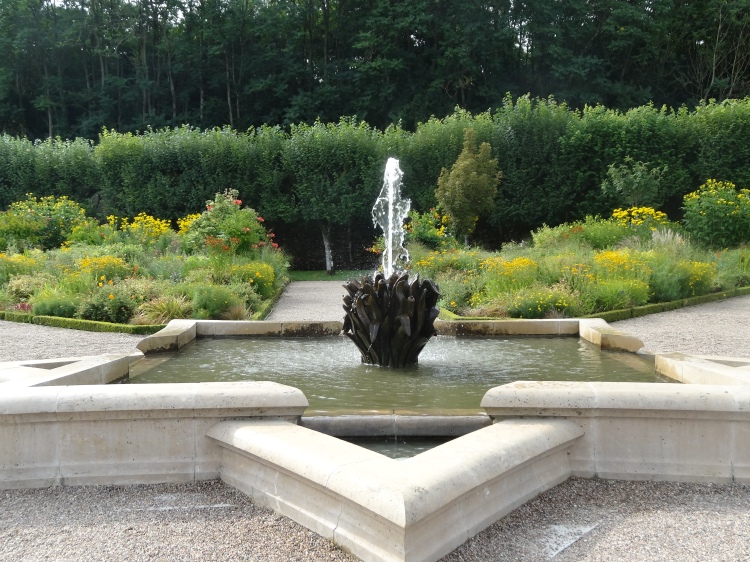
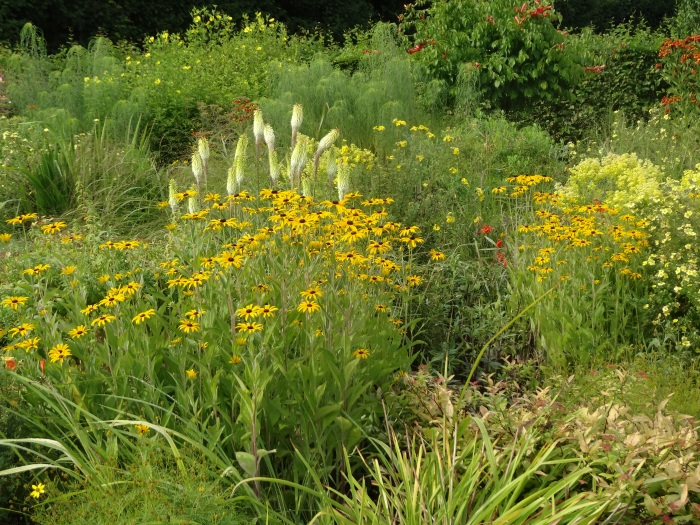
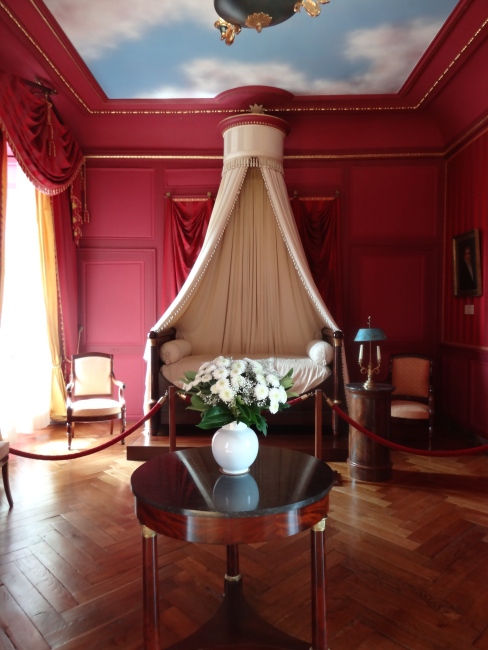
All simply magnificent. I had already heard about and admired pictures in a book. The phtos you share with us are really great and we all want to do the same in our gardens 🙂
LikeLiked by 1 person
Thanks Christiane, I’m so glad you enjoyed the tour. Villandry is very photogenic!
LikeLike
Such beauty! The gardens are mind boggling!!!
LikeLiked by 1 person
They are indeed! I had seen photos before I visited but in reality they are even more impressive.
LikeLike
This place is spectacular! Great shots – thanks for sharing 🙂
LikeLiked by 1 person
It certainly is spectacular – detailed planning and planting and immaculate maintenance.
Glad you enjoyed the photos.
LikeLiked by 1 person
Absolutely gorgeous! Thanks for another wonderful tour.
LikeLiked by 1 person
A pleasure – really glad you enjoyed the tour of a really special garden.
LikeLiked by 1 person
Great pictures !! thanks for sharing, I enjoyed them very much !!!
LikeLiked by 1 person
Many thanks – glad you enjoyed the pictures, it’s such an exceptional garden.
LikeLike
oh yes, this garden really is extraordinary but then the gardens of the French castles really are quite something, like the gardens of Versaille…and so many others, but I think they have MANY gardeners to work in them !!!
LikeLiked by 1 person
I agree – vision and plenty of labour required!
LikeLike
oh yes, you need vision for such an intricate garden !!!!
LikeLike
I am very very envious! I went on a wine tasting holiday once and passed right by. I was itching to jump ship and go in. As you say, the standards are wonderful – it doesn’t look like anyone could actually work in it. They would not appreciate me in my muddy wellies! I wonder if they keep spare veg plants ’round the back’ in case any don’t come up to scratch? Lovely photos and observations, thank you for sharing them.
LikeLiked by 1 person
Wine tasting seems like a good alternative to me!
Of the Chateaux in the Loire, Villandry is one of the best maintained I think and the interior is lovely too. Veg are indeed grown discreetly elsewhere. Hope you make it sometime!
LikeLiked by 1 person
I could happily combine garden visiting with wine tasting: possibly my two favourite activities 🙂
LikeLiked by 1 person
Absolutely wonderful tour! Thank you so much!
LikeLiked by 1 person
Thanks Georgianna – such an amazing garden!
LikeLike
Pingback: A Year in the Vegetable Garden | The Frustrated Gardener
Pingback: Visiting the Châteaux of the Loire and their gardens. | Jardin
Pingback: A Year In The Huerta
Pingback: 4. Understanding a range of specialist elements in the establishment of garden and urban plantings | Tentative Plant Scientist
Thank you for this story and fabulous photos. I can’t wait to visit, in the meantime some aspirational topiary is on the agenda in my front yard!!
LikeLike